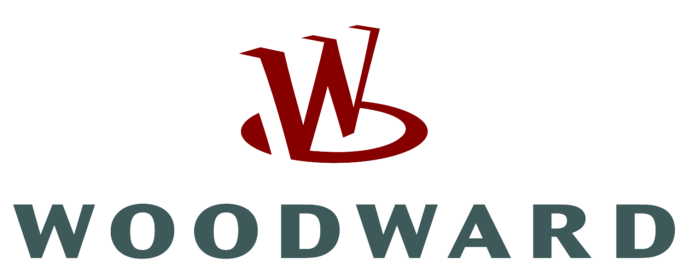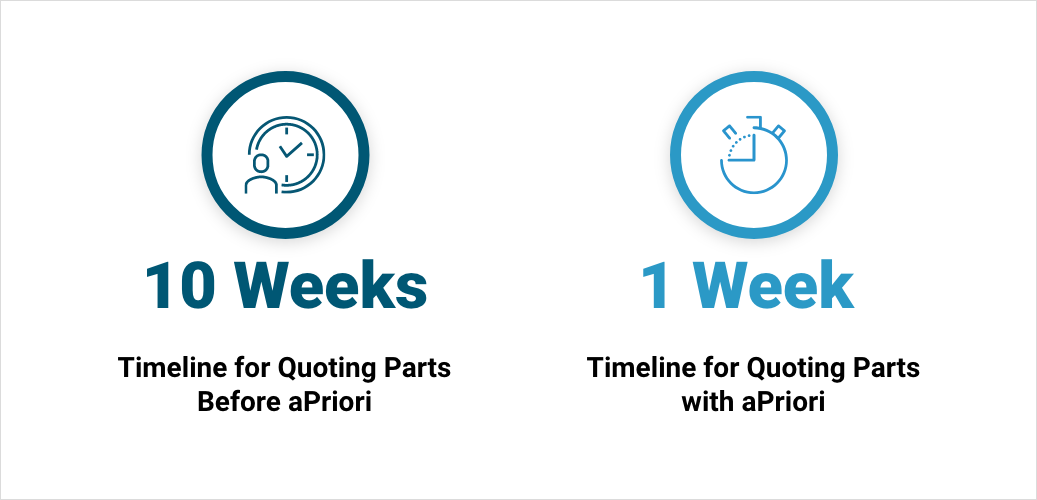Case Study
Addressing Labor Shortages with Digital Transformation
Introduction
Labor shortages have disrupted manufacturing and pushed costs higher for years. With 2.1 million manufacturing jobs forecast to go unfilled by 2030 and an aging workforce, this labor market does not appear likely to become more forgiving for the foreseeable future.
In this context, manufacturers must leave no stone unturned in the search for new ways to economize on labor. In this case study, we look at how aPriori helped Woodward do just that, addressing labor shortages while supporting other key digital transformation goals.

Company Details
Industry
Aerospace
Number of Employees
8000
Revenue
$2.25 Billion
Website
aPriori Product
aP Pro
The Problem
Address Labor Shortages Through Digital TransformationThe Solution
Use the Digital Factory to Collaborate with Suppliers and Economize on LaborWho is Woodward?
Woodward is an independent designer, manufacturer, and service provider of energy conversion and control solutions for the aerospace and industrial markets. Drawing on over 50 years of history working with motion control and integrated propulsion systems, Woodward also provides critical control, actuation, valve, and protection system for oil/gas and process manufacturing applications.
Based in Fort Collins, Colorado, Woodward maintains over 8,000 employees spread across 14 countries, managing a complex global supply chain to support its continuous product innovation.
Problem: Address Labor Shortages Through Digital Transformation
Already facing a labor crunch due to departures and retirements in the wake of COVID, Woodward saw labor shortfalls as not just an acute challenge to solve, but a lasting business problem that necessitated a focused strategic transformation. Woodward recognized that with 75% of machinists in the US at age 45 or older, a new approach to manufacturing would be needed to stay competitive over the long term. To respond, they developed a digital transformation strategy centered on three pillars.
- Using cobotics (robots designed to safely work in collaboration with humans) to augment the machinist labor pool wherever possible.
- Sourcing from emerging regions such as Southeast Asia and India with fewer labor restraints.
- Using simulated manufacturing in a digital factory to improve supplier collaboration and bring down labor requirements for purchased parts.
The right solution would need to fit with Wooodward’s vision for digital transformation and operational excellence. Their digital strategy called for an increased velocity in product development and production while achieving higher quality and lower overall cost. In the face of a labor shortage, these improvements would be instrumental to enabling faster revenue growth without an equivalent increase in labor requirements.
In this video, you can learn more about how the status quo for Woodward’s supply chain compares with its long-term digital transformation goals:
Solution: Use the Digital Factory to Collaborate with Suppliers and Economize on Labor
Woodward identified aPriori as a strong fit for their need for a digital factory that could be configured to reflect the cost structure of different suppliers across the country and globe. Data gleaned from simulation in the digital factory is the ideal anchor for supplier negotiations centered on high-level cost drivers such as overhead, profit margin, and labor. Focusing on negotiating these high-level variables with suppliers is key to bringing down costs across thousands of components that would be inefficient to negotiate one by one.
With digital factories configured to reflect the actual equipment lists of suppliers, Woodward can move forward with confidence that should cost data reflect reasonable expectations for suppliers. If suppliers cannot meet a should cost estimate generated in aPriori, this data provides a foundation for constructive, fact-based negotiations that can help suppliers identify opportunities for reducing labor costs and boosting competitiveness.
You can learn more about should cost analysis and negotiation in our guide here.
Results: Nurture Digital Partnerships with Key Suppliers to Speed Up Quoting and Bring Down Labor Costs
aPriori’s capabilities have dramatically shortened the timeline for quoting parts–from ten weeks down to about one.

The combination of accelerated quoting timelines and more constructive, fact-based negotiations are an ideal foundation for more collaborative relationships with suppliers. Currently, Woodward is “digitally partnering” with key suppliers to develop digital factories which are even more finely tuned to their real-life cost structure, open capabilities, and capacity. Many machine shops offer only a focused set of manufacturing capabilities, and this data helps to ensure that RFQ’s only go out to relevant suppliers with the availability to deliver on schedule.
You can learn more about how Woodward uses aPriori for supply chain planning in this interview:
Critically, aPriori also directly reduces the labor demands of the quoting process itself for suppliers. In many cases, this can even open additional labor for added manufacturing capacity.
Data from the digital factory also streamlines the quoting process for sourcing teams at Woodward. Instead of conducting negotiations and answering questions from three or more different suppliers for each new part, quoting professionals can focus on 1:1 collaboration with the supplier most likely to provide an efficient bid. Over the long term, continued refinement of digital factories will allow suppliers to quickly and confidently process bids for new parts through a true self-quoting Zero RFQ arrangement.
Experience aPriori in Action
Meet with an aPriori expert and learn how we can help you to eliminate product costs, improve productivity, and reduce your carbon footprint.








